

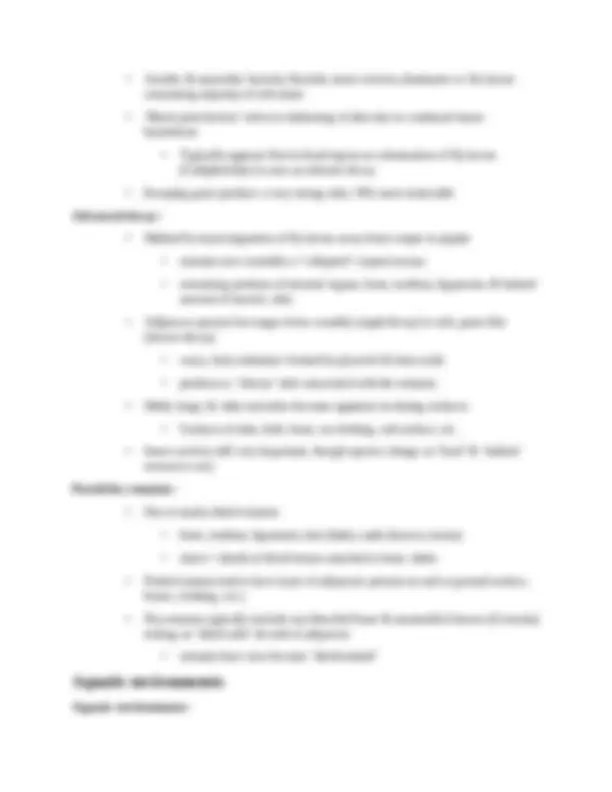

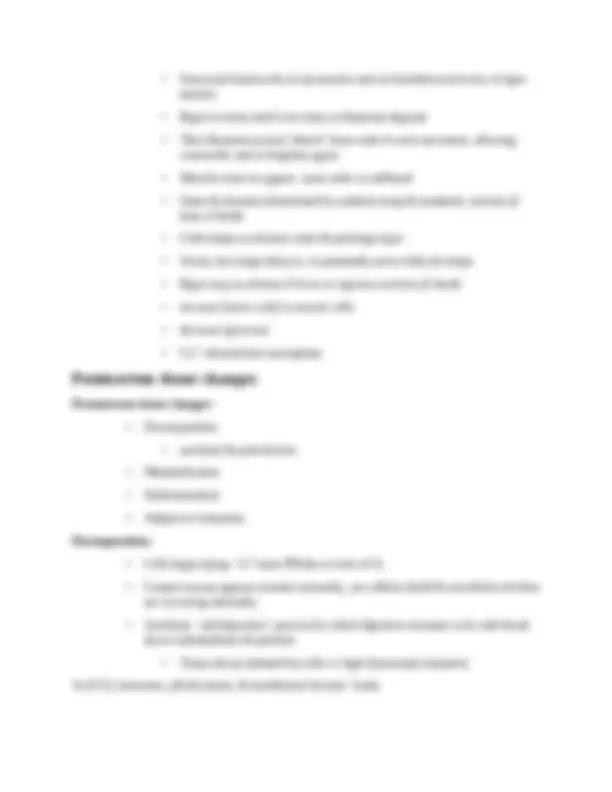
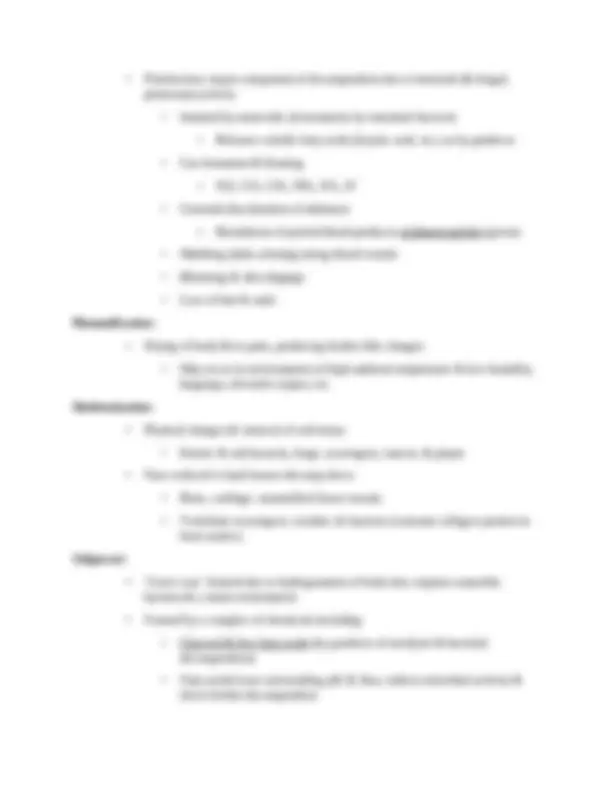
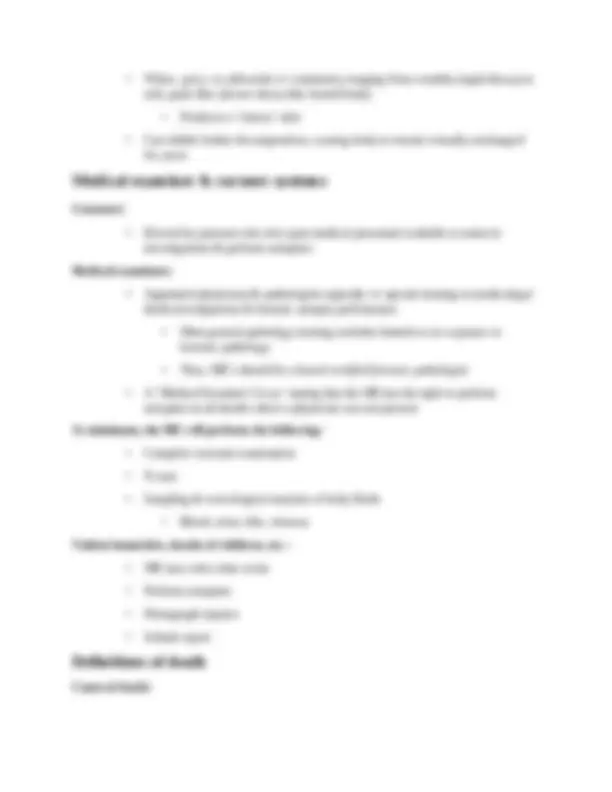


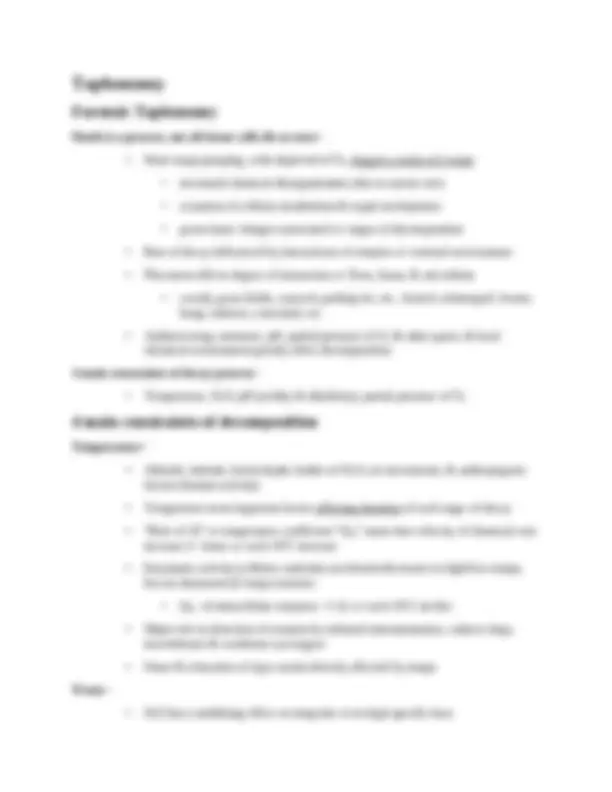


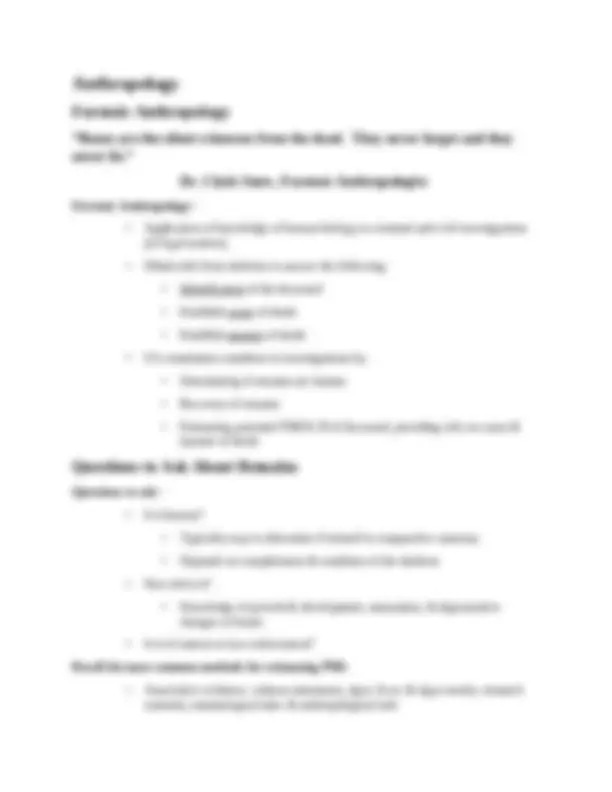
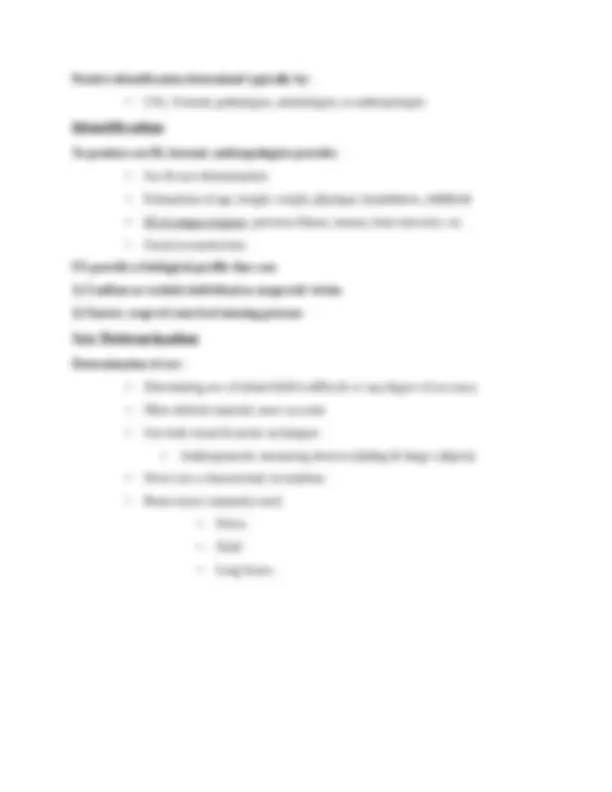

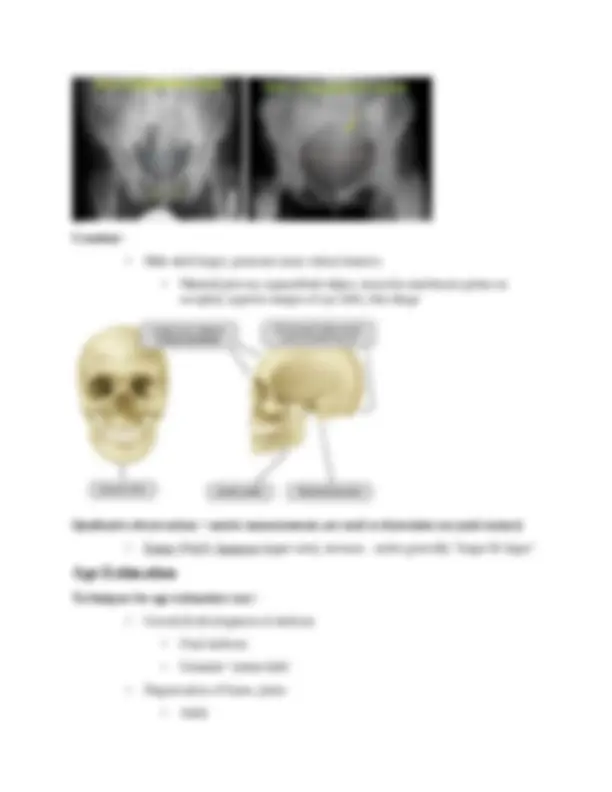


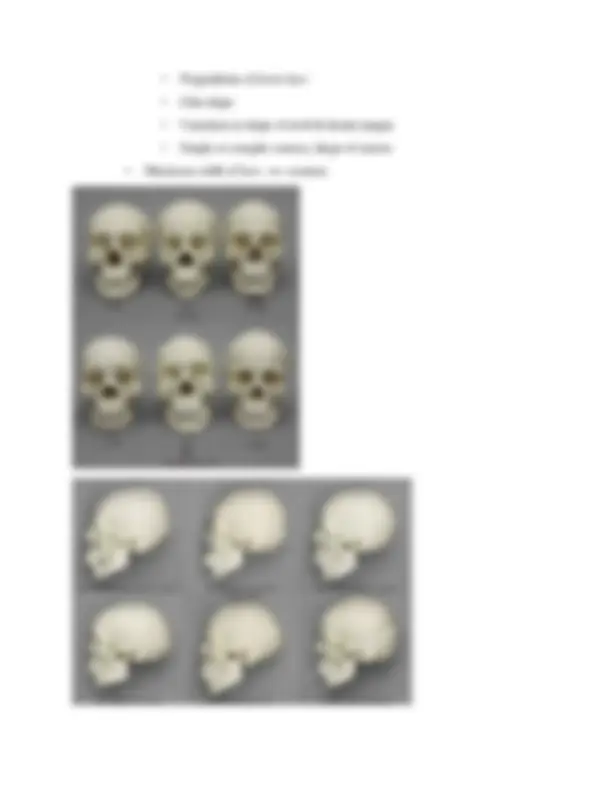
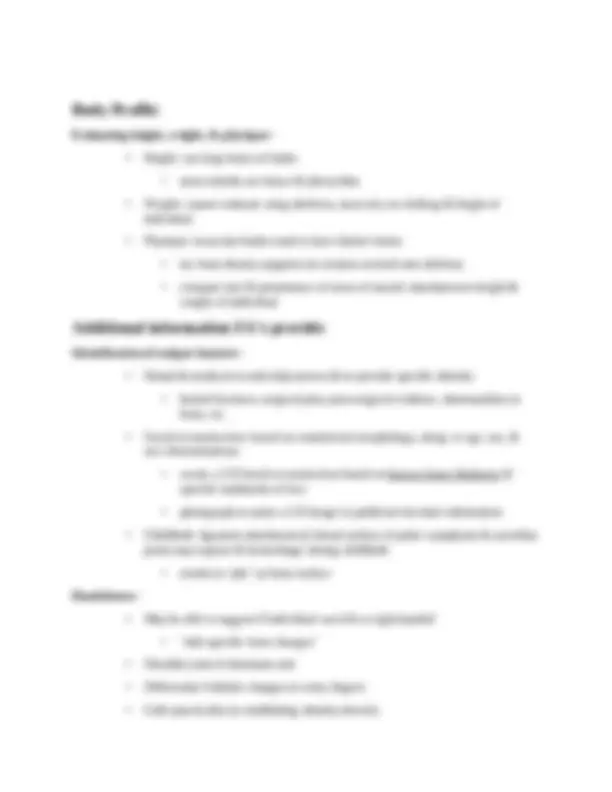
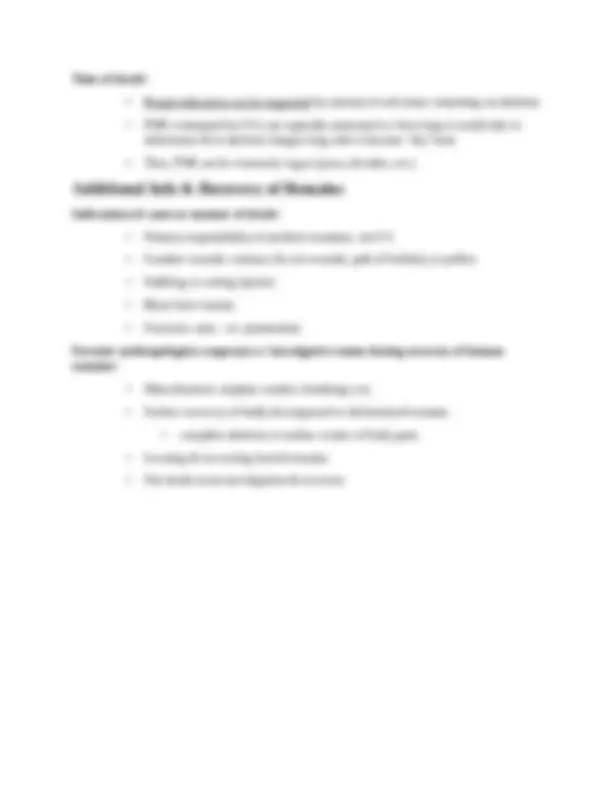
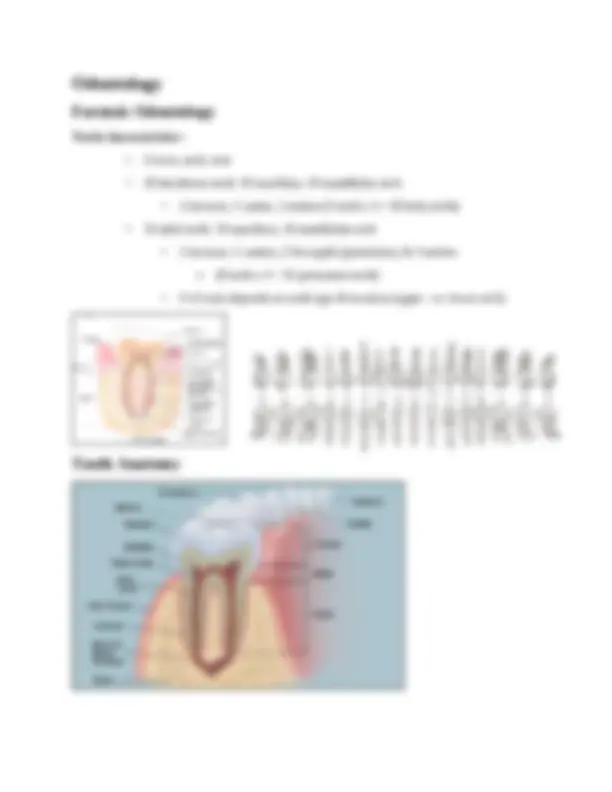
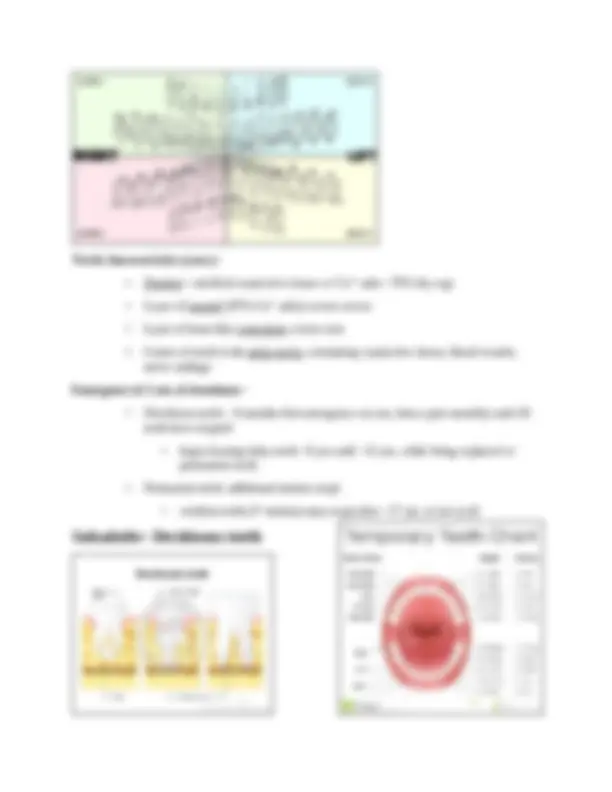
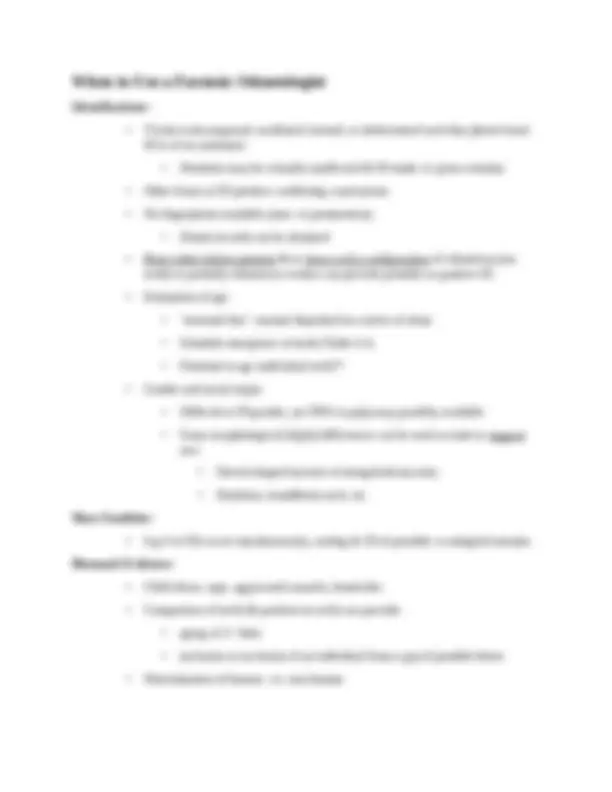
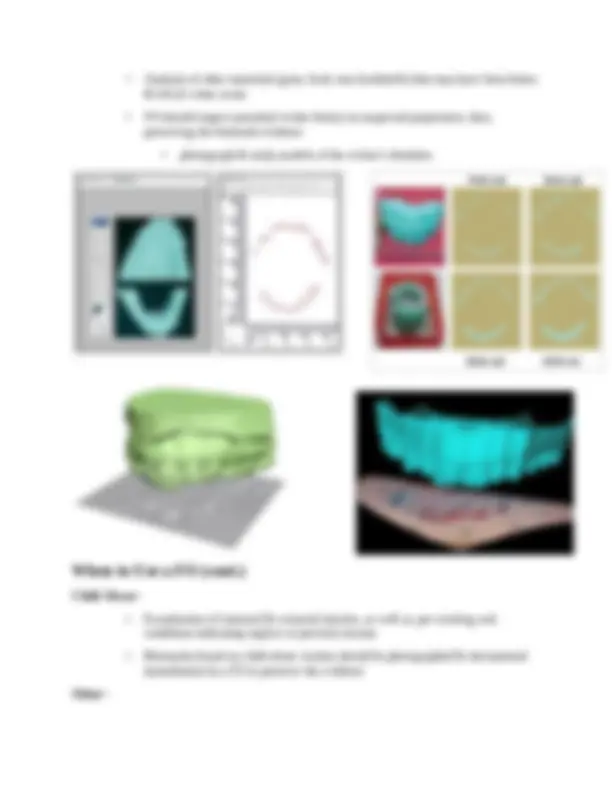
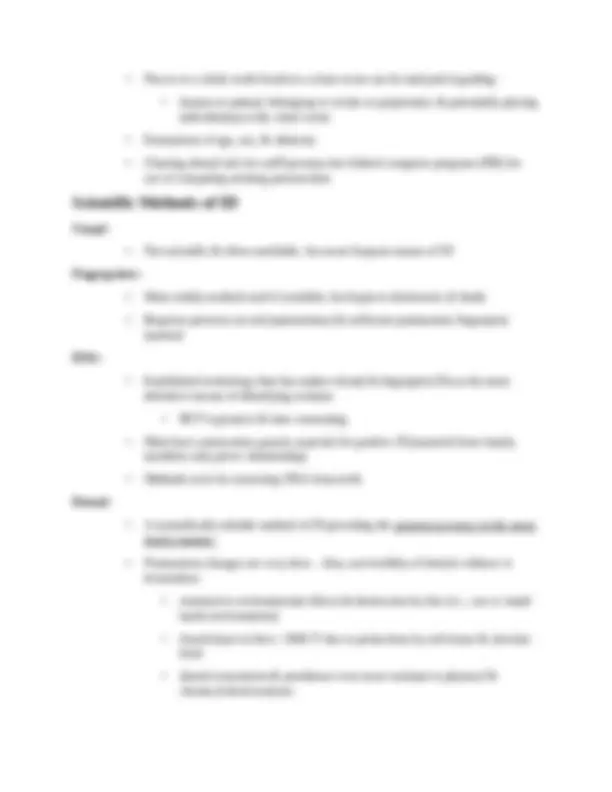
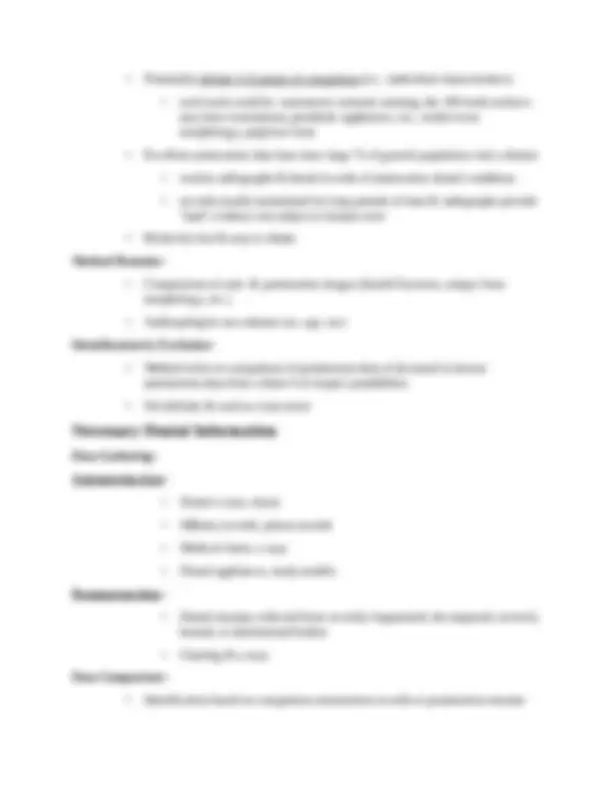

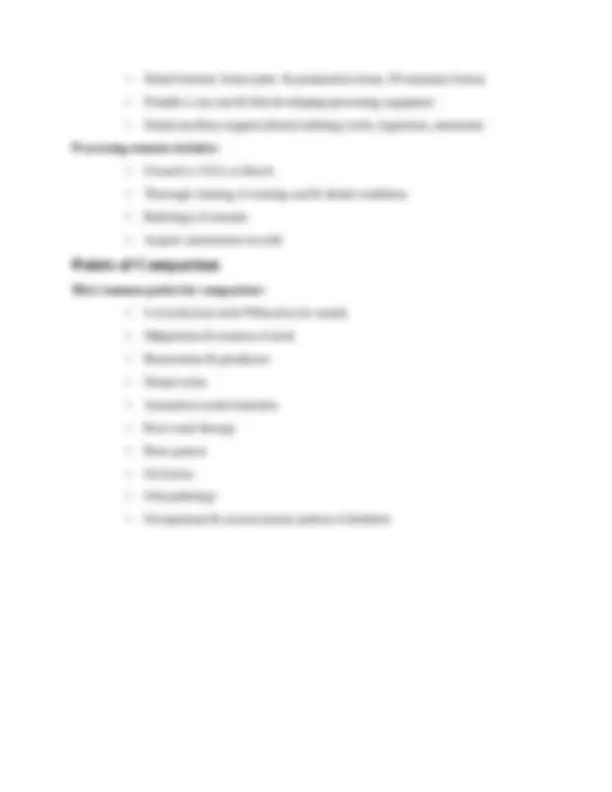


Study with the several resources on Docsity

Earn points by helping other students or get them with a premium plan


Prepare for your exams
Study with the several resources on Docsity

Earn points to download
Earn points by helping other students or get them with a premium plan
Community
Ask the community for help and clear up your study doubts
Discover the best universities in your country according to Docsity users
Free resources
Download our free guides on studying techniques, anxiety management strategies, and thesis advice from Docsity tutors
Covers all material for exam 1. Stages of decay, role of pathologist, forensic anthropology, forensic odontology, forensic taphonomy, etc.
Typology: Lecture notes
1 / 36

This page cannot be seen from the preview
Don't miss anything!





























Taphonomy~
Rate of decay varies according to:
Aquatic environments~
Postmortem tissue changes~
Cause of death:
Types of death~
Definition: “A branch of medicine that applies the principles & knowledge of the medical sciences to problems in the field of law.” (DiMaio & DiMaio)
Forensic pathologist~
Autolysis & cell death~
2 stages of cellular death~
- Stage 1 (early reversible): ATP synthesis drastically reduced due to anoxia &/or direct damage to mitochondria - cellular activities fail w/o ATP & cells swell due to osmotic imbalance (membrane pumps fail) - anaerobic fermentation produces lactic acid (lowering pH)
Forensic Anthropology~
Questions to ask~